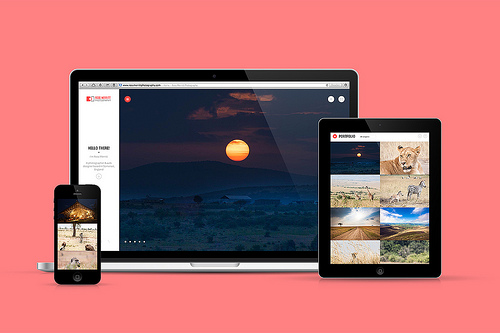Mobile is a fantastic platform for marketers to connect with their selected target audience, if utilized properly. When a customer is using a smartphone and is ready to shop on your site, make sure it’s a smooth process. If the website isn’t optimized for a mobile platform, the customer has to go through an annoying process where s/he needs to zoom, click and undergo the difficulty of filling out a credit card form. Then it’s likely that s/he might leave the site in pure frustration. In other words, make sure your mobile platform is optimized!
Here are a few tips on how you as a marketer can optimize your mobile marketing.
#1: Responsive Design Ross Merritt Photography
Responsive design is defined as content/layout that automatically tailors itself to the size of the screen and is a vital part when you want to optimize for mobile. If you employ a mobile responsive design that is preferable from an SEO perspective, the user experience will also be more consistent across multiple devices.
A consistent experience is what users expect, so it’s important that your mobile version has the same content as on your website. Consistency is key, not just for your content but also for the navigation and the look and feel of the platform. Make sure you optimize your content for each device and not just for mobile as a whole; the user experience is different on every device. You’ll find more information about responsive design here: Smashing Magazine
#2: Know your Audience’s Mobile Habits EP
 Here are a few questions you should ask yourself regarding your target audience:
Here are a few questions you should ask yourself regarding your target audience:
- How many of your audience are accessing your site with mobile devices?
- Do they use tablets or smartphones?
- What are they doing on the site and what content are they accessing? How does their activity compare with your overall traffic?
- How much time do they spend on your website? For example, there’s a big difference between audiences who spend 10 minutes compared to those who spend 90 seconds on the site.
- Are they consuming your visual content?
- What other sites are they visiting the most?
- The more you know about your audience, the more gripping your content’s going to be and it will make your content feel more native.
#3: Test your Platform
You should always test your mobile platform, even if you’re new to the experience or if you’ve worked with mobile for a long time. If you don’t see results when using one type of mobile advertising, there are always others that might work better for you and what you’re selling. It’s still a fairly cheap platform with a whole bunch of options, so make the most of it!
#4: Visual Content
Something that’s really hitting the ground running this year is visual content. Videos, infographics, images are just a few examples of visual content and it’s becoming increasingly important. Micro-videos such as Vine for example, a new trend in digital marketing, require close attention.
These videos have huge potential if the marketers are able to convey their message in the appropriate way; they can be efficient with the viewer’s time and can also be more enticing than text. Now is a great time to introduce visual contents to your mobile content strategy, go for it!
Tip #5: KPIs and Objectives
The goals you set for your mobile campaign should be unified with your overall online strategy. However, they should be different in a distinctive manner when compared with your desktop goals. It’s important to define your specific mobile objectives. If you have unique KPIs for your mobile strategy, it may be a way to increase downloads or time spent on your app.

|
|---|



